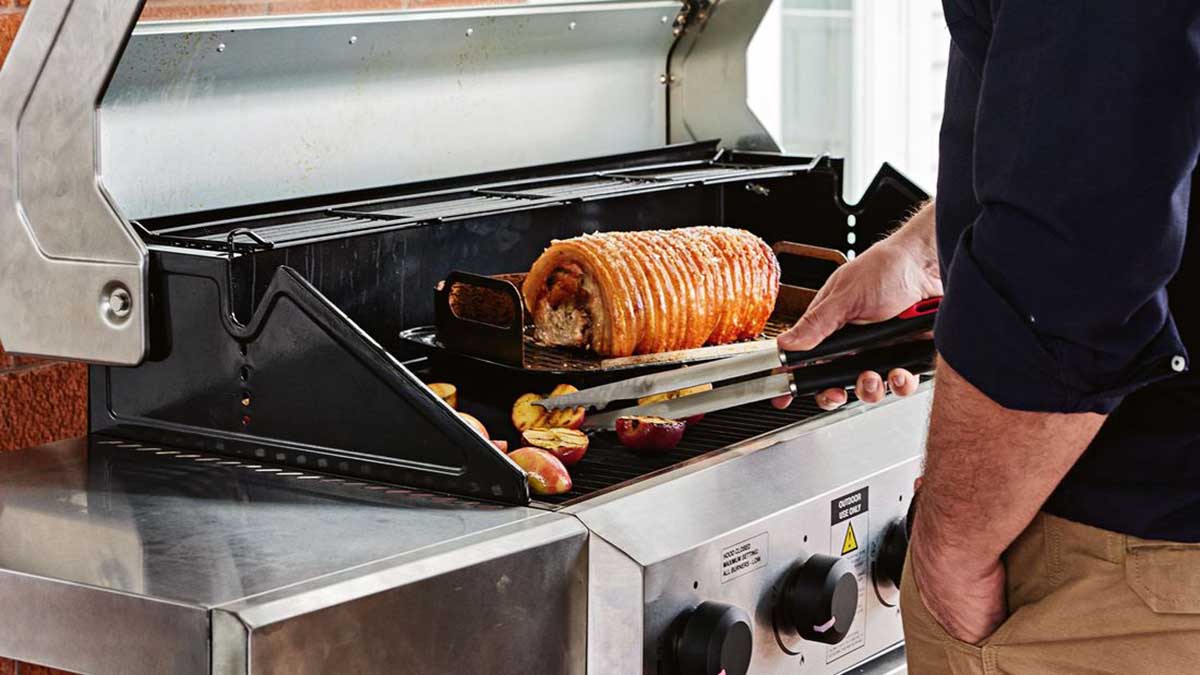Mastering the Art of Cooking Brisket on a Gas Grill: A Comprehensive Guide
Written By James Morgan
There's a little-known secret among BBQ enthusiasts: mastering how to cook brisket on a gas grill can transform your grilling game. This guide will provide you with step-by-step instructions, ensuring that you achieve a perfectly cooked brisket every time. For those of you who love the art of barbecue but have found yourself struggling with this classic meat cut, worry not. This comprehensive tutorial will walk you through every step of the process with ample tips and tricks that I've gathered over years of grilling.
Preparing Your Brisket
Preparation is key when learning how to cook brisket on gas grill. The first step is to select the perfect cut of brisket. As with any dish, the quality of your ingredients will greatly impact the final outcome. Look for a piece with a good amount of marbling, which will help to keep the meat juicy and full of flavor.
Once you have your brisket, it's time to trim it. Using a sharp knife and a steady hand, remove any excess fat that is thicker than 1/4 inch. Be careful not to over-trim, as you want to keep enough fat to provide flavor and moisture during the long cooking process. Always work on a stable surface, such as a cutting board designed for meat preparation.
Seasoning the Brisket
Now comes the fun partseasoning your brisket. A good rub is essential for imparting flavor. Traditional BBQ rubs consist of a mixture of salt, pepper, garlic powder, onion powder, and paprika. Feel free to get creative and add spices like cumin, chili powder, or brown sugar for extra depth. Ensure the brisket is generously coated with the rub, pressing it into the meat to ensure it adheres well.
Let the seasoned brisket sit at room temperature while you prepare your grill. This allows the rub to penetrate the meat and the brisket to warm up slightly, which promotes more even cooking.

Setting Up Your Gas Grill
Having the right equipment is crucial for learning how to cook brisket on gas grill. Preheat your gas grill to a low temperature setting, around 225F. Cooking brisket is all about low and slow, which helps to break down the connective tissues without drying out the meat.
Set up your grill for indirect cooking. This means placing the brisket on one side of the grill and the heat source on the other. If your grill has a built-in smoker box, fill it with wood chips (hickory, oak, or mesquite are excellent choices) for smoke flavor. If not, you can make a smoker pouch by wrapping wood chips in aluminum foil and poking some holes in it to allow the smoke to escape.

Cooking the Brisket
Place the brisket fat side up on the grill. This allows the fat to render down through the meat, keeping it moist and flavorful. Close the lid, maintaining a consistent temperature of 225F. Cooking times can vary based on the size of the brisket, but a general rule of thumb is to cook the brisket for about 1.5 hours per pound.
During the cooking process, avoid lifting the lid too often as this lets out valuable heat and smoke. Use a meat thermometer to monitor the internal temperature of the brisket. When it reaches around 165F, it's time to wrap the brisket. This step, often referred to as the 'Texas crutch,' involves wrapping the brisket tightly in aluminum foil or butcher paper to prevent it from drying out during the final stages of cooking.
Continue cooking until the internal temperature of the brisket reaches 195F to 205F. This is the point at which the connective tissues have broken down, resulting in tender, juicy meat.
:max_bytes(150000):strip_icc()/faw-gas-grills-test-monument-4-burner-propane-rkilgore-129-e0873ca1a80d4642988d0874f1eb6a11.jpg)
Resting the Brisket
One of the most important steps in learning how to cook brisket on gas grill is allowing the meat to rest after cooking. Transfer the wrapped brisket to a cooler or an insulated bag, and let it rest for at least an hour. This resting period allows the juices to redistribute throughout the meat, making every bite melt-in-your-mouth delicious.
Slicing and Serving
After the brisket has had time to rest, transfer it to a cutting board and unwrap it carefully, preserving any juices. Using a sharp knife, slice the brisket against the grain. The grain refers to the direction of the muscle fibers. Cutting against the grain ensures each slice is tender, rather than chewy.
Serve the brisket as is, or with your favorite barbecue sauce on the side. Classic sides like coleslaw, baked beans, and cornbread make excellent accompaniments to this BBQ staple. For more grilling recipes, check out this easy grilling guide.
Cleaning and Maintenance
After enjoying your delicious brisket, the last thing you want to do is deal with the cleanup. However, maintaining your equipment is essential for future grilling success. Use a cookware cleaner specifically designed for grills to ensure all grease and char are removed from the grates. If you used a smoker box or pouch, empty out any remaining ash and debris.
Your cutting board used for slicing the brisket will also need some attention. Apply a generous amount of cutting board oil to keep the wood from drying out and cracking.
Final Thoughts
Learning how to properly cook brisket on gas grill can seem daunting at first, but with patience and practice, you too can become a BBQ master. Remember, the key to a great brisket lies in the preparation, cooking low and slow, and allowing the meat to rest. With these tips and steps, you're well on your way to impressing your friends and family with mouth-watering, tender brisket at your next cookout. If you're looking for more tips on grilling, you might also want to read about cooking French fries on a griddle or even preparing chicken for casseroles. Happy grilling!
As an Amazon Associate, I earn from qualifying purchases.



